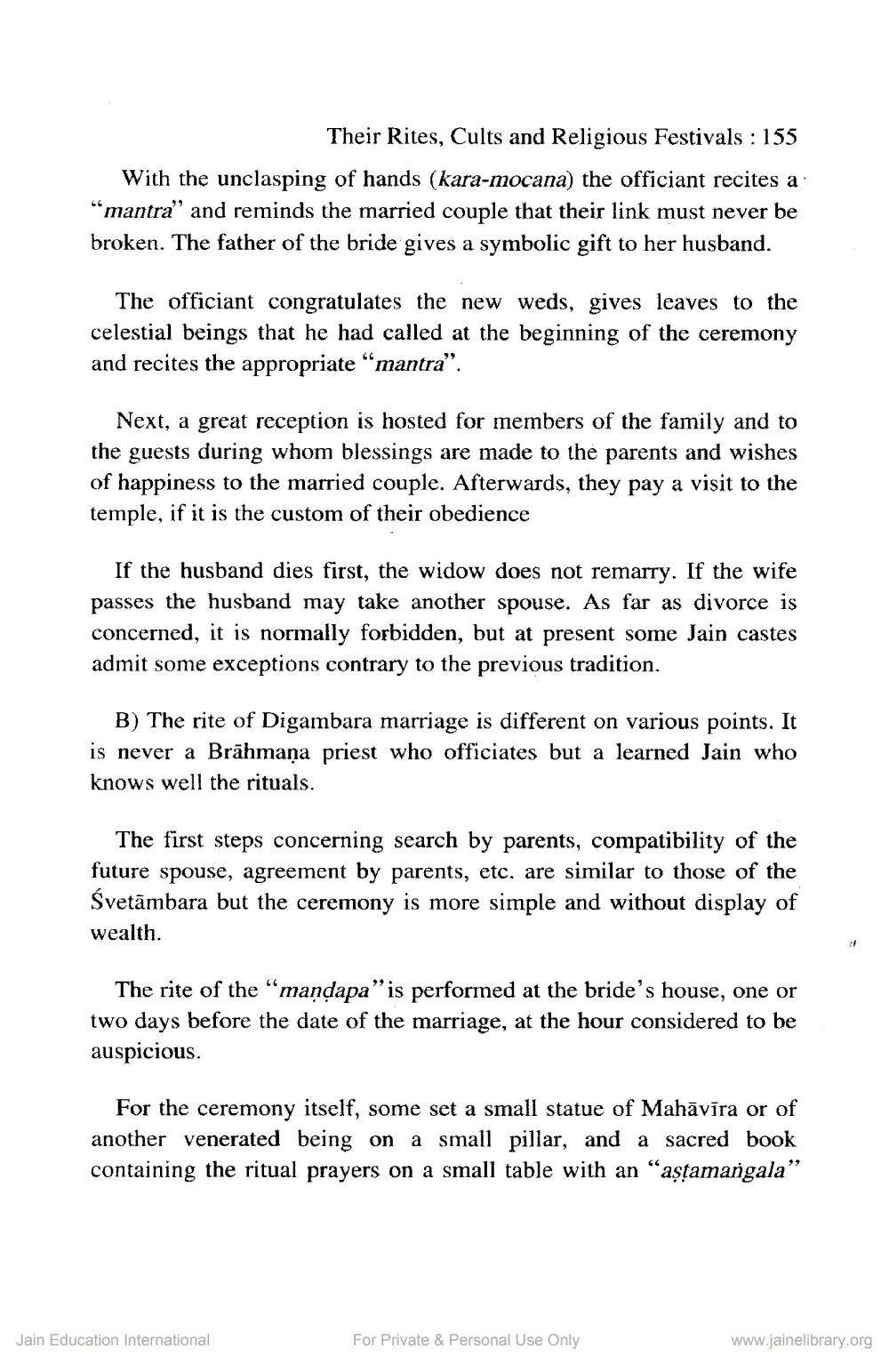________________
Their Rites, Cults and Religious Festivals : 155 With the unclasping of hands (kara-mocana) the officiant recites a: “mantra” and reminds the married couple that their link must never be broken. The father of the bride gives a symbolic gift to her husband.
The officiant congratulates the new weds, gives leaves to the celestial beings that he had called at the beginning of the ceremony and recites the appropriate “mantra".
Next, a great reception is hosted for members of the family and to the guests during whom blessings are made to the parents and wishes of happiness to the married couple. Afterwards, they pay a visit to the temple, if it is the custom of their obedience
If the husband dies first, the widow does not remarry. If the wife passes the husband may take another spouse. As far as divorce is concerned, it is normally forbidden, but at present some Jain castes admit some exceptions contrary to the previous tradition.
B) The rite of Digambara marriage is different on various points. It is never a Brāhmana priest who officiates but a learned Jain who knows well the rituals.
The first steps concerning search by parents, compatibility of the future spouse, agreement by parents, etc. are similar to those of the Svetāmbara but the ceremony is more simple and without display of wealth.
The rite of the “mandapa"is performed at the bride's house, one or two days before the date of the marriage, at the hour considered to be auspicious.
For the ceremony itself, some set a small statue of Mahāvīra or of another venerated being on a small pillar, and a sacred book containing the ritual prayers on a small table with an “aştamangala"
Jain Education International
For Private & Personal Use Only
www.jainelibrary.org




